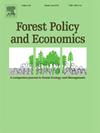丹麦森林娱乐价值的季节性
IF 3.8
2区 农林科学
Q1 ECONOMICS
引用次数: 0
摘要
森林的组成和外观对于娱乐价值的重要性是众所周知的,在丹麦,人们更喜欢落叶物种而不是针叶物种。然而,这些物种外观的季节变化对娱乐偏好的影响仍未得到充分研究。在本文中,我们结合三个数据集来研究季节性如何影响人们对森林参观的偏好。通过一项为期一年的重复选择实验,我们发现丹麦公众对落叶林的偏好远远超过针叶林,在春季和夏季比在秋季和冬季更为明显。利用丹麦各地的森林游客数据,我们证明,在落叶树木比例较高的森林中,游客数量的季节性变化更为明显。最后,我们使用PPGIS数据显示,受访者在冬季前往森林并在森林中停留的时间较短。然而,运输方式在一年中是稳定的。因此,在物种偏好、旅行距离、访问频率、访问持续时间和运输方式这五个重要因素中,我们发现前四个因素随季节变化显著,而后者没有显著的季节变化。我们的结论是,以前的评估研究主要基于春季或夏季,是对落叶林比针叶林的偏好以及旅行距离的上限。今后关于森林游憩的估价研究应更加注意季节性的影响,以作出无偏见的估计。本文章由计算机程序翻译,如有差异,请以英文原文为准。
Seasonality of the recreational value of forests in Denmark
The importance of forest composition and appearance for recreational value is well-known, with a preference for deciduous species over coniferous species in Denmark. Yet, the effect of seasonal variation in appearance of these species on recreational preferences remain underexplored. In this paper, we combine three datasets to examine how seasonality affects people's preferences for forest visits. Using a repeated choice experiment over a one-year period, we find that the Danish public's preference for deciduous over coniferous forests is far more pronounced in spring and summer than in autumn and winter. Using forest visitor data from counting stations across Denmark, we demonstrate that the seasonal variation in visitor numbers is more pronounced for forests with a higher share of deciduous trees. Finally, we use PPGIS data to show that respondents travel to and stay shorter in the forest in the winter. The mode of transport, however, is stable over the year. Thus, out of five elements important for the calculation of welfare estimates, being species preference, travel distance, visit frequency, visit duration and transport mode, we find that the first four vary significantly by season, with no significant seasonal variation for the latter. We conclude that previous valuation studies, primarily based on spring or summer seasons, are upper bounds on the preference for deciduous forests over coniferous forests as well as for travel distance. Future valuation studies on forest recreation should pay closer attention to the effects of seasonality to produce non-biased estimates.
求助全文
通过发布文献求助,成功后即可免费获取论文全文。
去求助
来源期刊

Forest Policy and Economics
农林科学-林学
CiteScore
9.00
自引率
7.50%
发文量
148
审稿时长
21.9 weeks
期刊介绍:
Forest Policy and Economics is a leading scientific journal that publishes peer-reviewed policy and economics research relating to forests, forested landscapes, forest-related industries, and other forest-relevant land uses. It also welcomes contributions from other social sciences and humanities perspectives that make clear theoretical, conceptual and methodological contributions to the existing state-of-the-art literature on forests and related land use systems. These disciplines include, but are not limited to, sociology, anthropology, human geography, history, jurisprudence, planning, development studies, and psychology research on forests. Forest Policy and Economics is global in scope and publishes multiple article types of high scientific standard. Acceptance for publication is subject to a double-blind peer-review process.
 求助内容:
求助内容: 应助结果提醒方式:
应助结果提醒方式:


